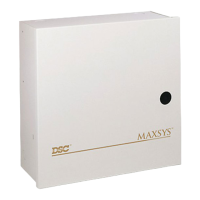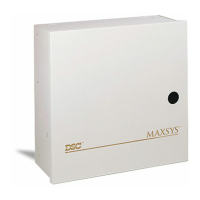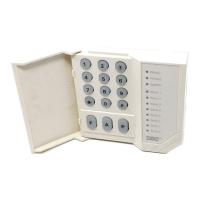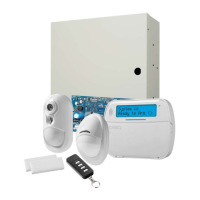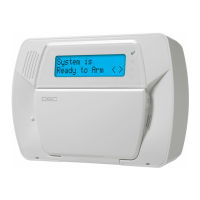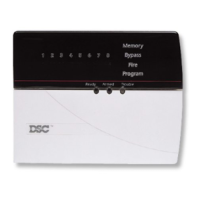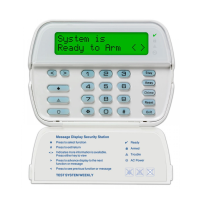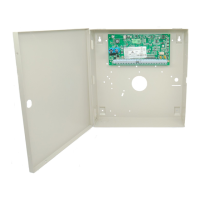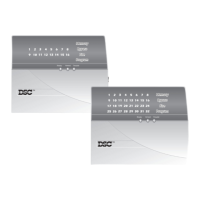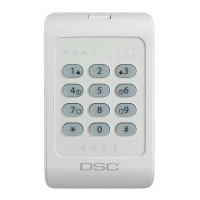15
COMMUNICATOR
SECTION
SYSTEM AREA
COMMUNICATOR
MAIN ITEMS
All options concerning communications can be programmed, including phone numbers,
reporting codes, account numbers and communicator options.
Main Items - Phone Numbers/Communication Format/Dialer Direction
Handling the phone numbers of monitoring stations or remote areas the panel communicates with.
The PC4010 can call up to 3 different phone numbers when reporting any event to a monitoring station. The second and
third numbers can be used as backups if the first or second fail.
Note: Dial Tone Search must be included for a number to backup to its Links Number.
1st Number can report any event program set in the dialer directions. By default all events are
sent through the first phone number. See ‘Communicator Toggles’ for more detail on backups.
2nd Number can report any events programmed if set in the dialer directions and can back up
the 1st Number. See ‘Communicator Toggles’ for more detail on backups.
3rd Number can report any events programmed if set in the dialer directions. It can also be used
to back up the first and/or second phone number. See ‘Communicator Toggles’ for more detail on
backups.
Enter the communicator telephone number the way you would dial it on a telephone. The total
number of digits including dial tone searches and pauses must not exceed 31. Press the [Q] key
to enter the telephone entry options menu. A ‘D’ for dial tone search is already programmed as the
first digit.
[0] Save [1] Dial tone [2] Pause 2 Seconds [3] Pause 4 Seconds
[4] DTMF [Q] [5] DTMF [#] [6] Previous Menu
[0] Save can be selected for the telephone number to be stored into the panel’s memory, or
simply press [#] when finished entering the phone number.
[1] Dial tone will add a dial tone search to the telephone number, which will be represented by a
‘D’ on the display. When the panel does a dial tone search, it looks for dial tone before
dialing the programmed telephone number.
[2] Pause 2 Seconds will add a two second pause to the dialing sequence, which will be
represented by the letter ‘A’ on the display.
[3] Pause 4 Seconds will add a four second pause to the dialing sequence, which will be
represented by the letter ‘E’ on the display.
[4] DTMF [Q] will input an asterisk, represented by a ‘B’ on the display. The dialer will output the
same frequencies as a touch tone phone would if the [Q] key were pressed. (Frequently
required to disable call waiting.)
[5] DTMF [#] will add a ‘#’ to the telephone number, represented by the letter ‘C’ on the display.
The dialer will output the same frequencies as a touch tone phone when the ‘#’ key is
pressed. (In some instances it is used to disable call waiting.)
COMMUNICATOR
(04)
MAIN ITEMS
(0)
1ST NUMBER
(0)
3RD NUMBER
(2)
2ND NUMBER
(1)
PGM TEL NUMBER
(0)
